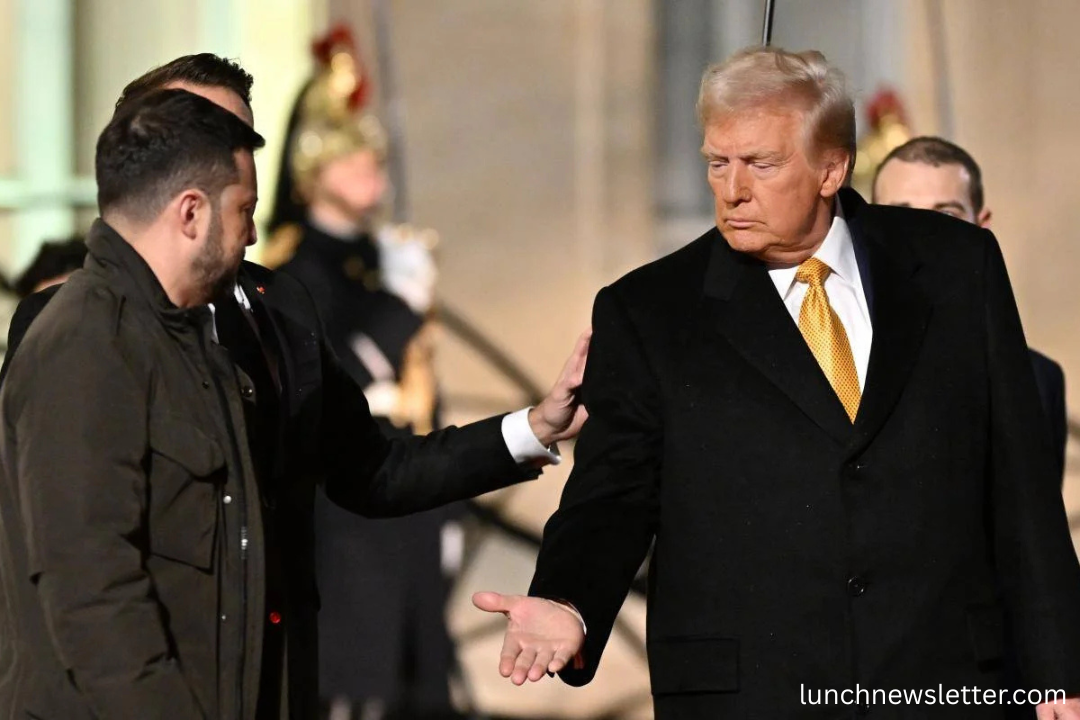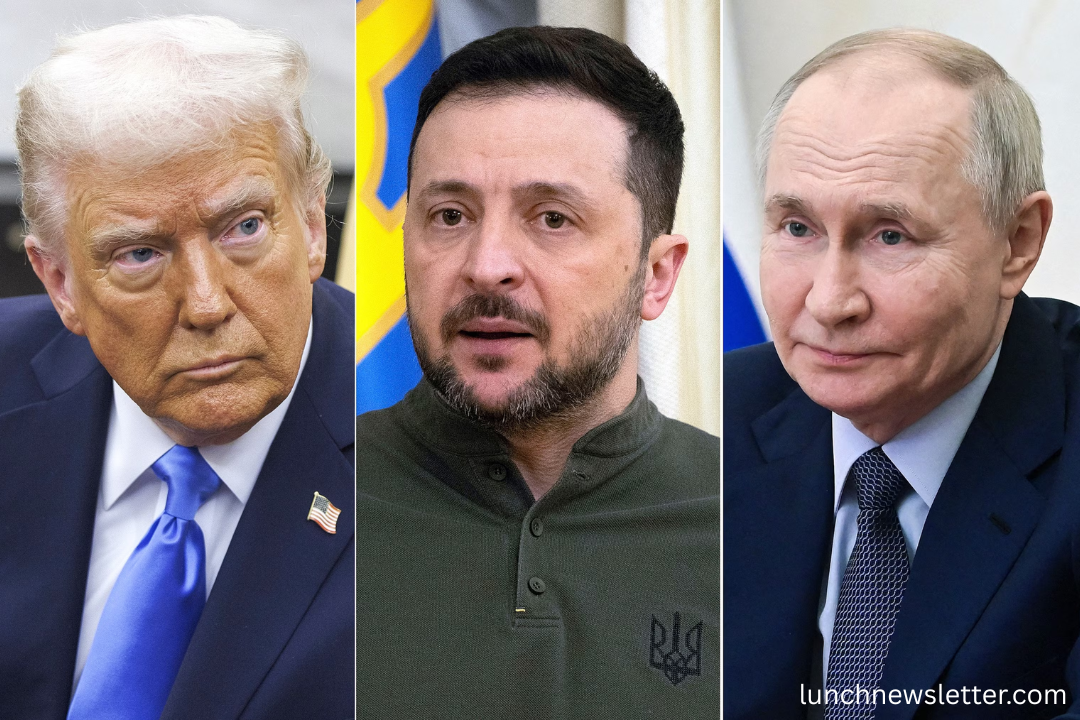Russia and Ukraine have dominated global headlines since the outbreak of war, but recent developments suggest a shift toward diplomacy. Former U.S. President Donald Trump believes both nations are “very close” to ending the conflict, signaling hope for a potential resolution to one of the most consequential geopolitical crises in recent history.
This statement, made during Trump’s visit to Rome, coincided with increased backchannel discussions between top-level officials. According to insiders, meaningful progress has been made on several core issues, reviving the possibility of a ceasefire and long-term peace agreement between Russia and Ukraine.
Trump’s Bold Claim – Peace Between Russia and Ukraine Is Within Reach
Donald Trump, speaking candidly during a press conference, shared that Russia and Ukraine are on the verge of settling their differences through negotiation. He noted that both sides had addressed many critical issues and were ready for what he described as “very high-level talks.”
While details remain sparse, this declaration followed multiple discreet meetings between Trump’s envoy and Russian President Vladimir Putin. Sources familiar with the dialogue claim that these conversations have narrowed the gap on previously contentious points.
Key Elements of the Potential Peace Agreement
Emerging reports point to several central proposals forming the foundation of the peace deal between Russia and Ukraine. Though unconfirmed, these include:
- Territorial Status Quo: Russia may maintain control over Crimea, and portions of eastern Ukraine seized since 2014. In return, Ukraine could receive economic aid and reconstruction support.
- NATO Neutrality: Ukraine may temporarily suspend its NATO membership bid. This would address Russia’s longstanding demand that Ukraine remain militarily non-aligned.
- Demilitarized Zones: A buffer zone could be created to reduce immediate military threats between the two countries, enabling civilian resettlement and rebuilding efforts.
While these provisions are reportedly under discussion, they reflect years of strategic tension and underscore the complex nature of resolving the Russia and Ukraine conflict.
Domestic Response Within Ukraine
Ukrainian President Volodymyr Zelenskyy has not publicly endorsed any final agreement, but he recently expressed openness to diplomacy over military confrontation regarding Crimea. Speaking during a national broadcast, Zelenskyy admitted that retaking Crimea by force was not viable “at this time” and emphasized the need for realistic solutions.
Still, Ukrainian leadership insists that any peace deal must guarantee national sovereignty and long-term security. Ukraine has lost tens of thousands of lives and seen millions displaced by Russia’s invasion, and any suggestion of territorial concessions remains politically sensitive.
International Community Reacts Cautiously
Global reaction to Trump’s claim has been mixed. European Union diplomats cautiously welcomed the news but stressed that any agreement between Russia and Ukraine must align with international law and preserve Ukrainian independence.
Meanwhile, U.S. officials have offered guarded support for the idea of peace talks but stopped short of endorsing Trump’s proposal outright. In a recent press briefing, the U.S. State Department emphasized that any diplomatic resolution must be led by Ukraine, not imposed externally.
Other nations—including China, India, and Turkey—have signaled their support for a peaceful end to the war and urged Russia and Ukraine to take advantage of the opportunity for direct negotiation.
Recent Escalations Threaten Diplomatic Progress
Even as diplomatic efforts progress, the situation on the ground remains tense. Russia recently launched missile strikes on Kyiv, causing civilian casualties and prompting strong condemnation from the international community.
In another disturbing development, a high-ranking Russian general was killed in a car bomb attack near Moscow. Russian authorities blamed Ukrainian special forces for the assassination, though Kyiv has not confirmed involvement. This escalation could complicate ongoing talks and threaten the fragile optimism surrounding potential peace.
Trump’s Motivations – Statesman or Strategist?

Trump’s involvement in the Russia and Ukraine issue has raised questions about his motives. As a former president and 2024 presidential candidate, his participation in backchannel diplomacy is highly unusual.
Critics argue that Trump’s efforts may be politically motivated, aimed at positioning himself as a peacemaker ahead of the following U.S. election. Supporters, however, say his unconventional diplomacy may be the breakthrough needed after years of stalemate.
Regardless of the intention, Trump’s role in facilitating communication between Russia and Ukraine has placed him at the center of renewed peace efforts.
Challenges to Peace Between Russia and Ukraine
Although both Russia and Ukraine have expressed interest in negotiation, many obstacles remain:
- Distrust and Hostility: Years of warfare and mutual blame have eroded diplomatic trust.
- Sovereignty Issues: Ukraine is unlikely to accept any agreement that permanently cedes territory.
- Political Pressure: Leaders in both nations face pressure from domestic and international stakeholders not to compromise too far.
- War Crimes and Reparations: Ukraine has called for justice and accountability for alleged Russian war crimes, a demand that complicates reconciliation efforts.
Despite these hurdles, the continued mention of Russia and Ukraine in peace talks indicates at least a willingness to engage—something that was missing in earlier phases of the conflict.
Opportunities in a Peaceful Resolution
If Russia and Ukraine successfully negotiate a ceasefire or more permanent settlement, the benefits would be profound:
- Humanitarian Relief: Millions of displaced civilians could begin to return home, and international aid could finally reach war-torn regions.
- Economic Recovery: A peaceful resolution would allow both nations to rebuild their economies and re-enter global markets.
- Geopolitical Stability: A successful peace deal could reduce tensions across Europe and set a precedent for resolving similar conflicts through diplomacy.
Moreover, a resolution would enable a redefinition of security frameworks across Eastern Europe, potentially easing longstanding tensions between Russia and NATO.
What Comes Next?
According to Trump, “it’s still a long way to go,” but the foundation for dialogue appears to be in place. Continued discussions between Russia and Ukraine, possibly facilitated by neutral third parties, may result in a preliminary framework that both sides can agree on.
Observers expect that if a deal is reached, it will likely involve a phased process, including ceasefires, troop withdrawals, international monitoring, and eventual referendums in disputed territories.
For now, the world watches and waits. The conflict between Russia and Ukraine has reshaped international relations, tested alliances, and inflicted immense human suffering. A peaceful resolution, while still uncertain, would be a historic turning point.
Frequently Asked Questions (FAQ’s)
What is the current status of the peace talks between Russia and Ukraine?
Russia and Ukraine are reportedly engaged in advanced peace negotiations. Former U.S. President Donald Trump claimed that both sides are “very close” to reaching an agreement. While no formal deal has been signed, diplomatic channels remain active.
What role is Donald Trump playing in the Russia and Ukraine conflict?
Donald Trump has positioned himself as an informal mediator, using backchannel diplomacy through his envoy. He believes that his efforts are bringing Russia and Ukraine closer to ending the war, though his involvement has sparked debate over his motives and influence.
Are Russia and Ukraine negotiating directly?
Yes, reports suggest that Russia and Ukraine are engaging in high-level talks. While some discussions are conducted through intermediaries, direct dialogue has also taken place between representatives of both governments.
What are the main points being discussed in the peace plan?
Key proposals in the peace plan include a ceasefire, territorial compromises, delayed NATO membership for Ukraine, and potential demilitarized zones. These terms remain under negotiation and are subject to change.
How has the international community responded?
The international response has been cautious. While some leaders welcome the possibility of peace between Russia and Ukraine, others worry that potential concessions could undermine international law and sovereignty.
Has Ukraine agreed to give up any territory?
Ukraine has not officially agreed to cede any territory. However, President Zelenskyy has hinted that military recovery of Crimea may not be feasible and that a diplomatic solution might be considered instead.
What challenges could derail the peace process?
Ongoing military actions, political pressures, territorial disputes, and mutual distrust are significant challenges. Incidents like missile strikes and targeted assassinations have added strain to the already fragile dialogue.
What would a peace deal mean for the future of Russia and Ukraine?
A successful peace agreement would mark a turning point for both countries, allowing for humanitarian aid, economic recovery, and regional stability. It would also influence global diplomatic norms regarding conflict resolution and territorial sovereignty.
Conclusion
Russia and Ukraine have endured years of devastating war, but peace may finally be on the horizon. Trump’s claim that the nations are “very close” to an agreement has sparked debate and cautious optimism. Whether these negotiations produce lasting results will depend on the willingness of both parties to compromise without sacrificing their core national interests. While skepticism remains, the renewed push for diplomacy reminds the world that even the most entrenched conflicts can find a path forward. In the weeks ahead, Russia and Ukraine will either make history or repeat it.

